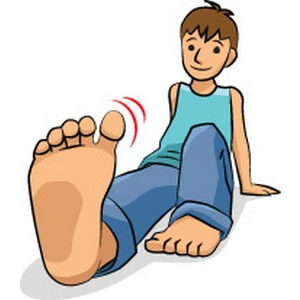

We’ve all heard the phrase “sticks out like a sore thumb”. We think that sore big toes cause enough problems to have a proverb too!
The big toe is known as the “hallux”. Using this term, we can describe a lot of the troubles that big toes can find themselves in!
Hallux Valgus:
This is an angulation of the big toe towards the little toe. It can result in a bunion on the inside of the big-toe joint.
While hallux valgus is actually a genetic predisposition, wearing tight or pointy footwear can speed up or exacerbate the condition. Physio can help with footwear advice, hands-on treatment and strengthening exercises. In more severe cases, we will refer on to a podiatrist for specialised orthotics or footwear. The best advice to prevent hallux valgus is to avoid wearing tight or pointy shoes, and go barefoot when you can. You can find more info on hallux valgus here.
Turf toe:
Turf toe is a sprain of the main big toe joint (1st metatarso-phalangeal joint, or 1st MTPJ). You can get a turf toe injury by having your big toe bent too far up towards the top of your foot. It happens in sport with a player wearing spiked or studded shoes, and then being tackled while the foot stays on the ground. Like any joint sprain, turf toe may need to be temporarily immobilised. After that, the joint will need to be built back up to full function while it heals. If the 1st MTPJ sprain is not properly rested and rehabilitated, it can lead to further problems, like hallux limitus. Physio can help diagnose and treat turf toe, getting you back to sport and activity as safely and as fast as possible.
Hallux Limitus:
As the name suggests, this is a limitation of movement of the big toe joint. It can come from trauma (like a turf toe), or come on gradually. There is some suggestion that wearing thongs can contribute to hallux limitus. This is because the big toe has to grip sideways and downwards to hold on to the thong, stiffening the joint on the process. If your big toe joint is stiff, it can make activities like walking and running difficult or even painful. Physio can help manage hallux limitus, with footwear advice, exercises and hands-on treatment.
Hallux Rigidus:
I bet you can guess what this is! It is when hallux limitus deteriorates and the big toe joint becomes rigid. This will usually need specialised footwear and orthotics. Physio can help with the ongoing management of hallux rigidus, and to help reduce the impact on your other leg joints.